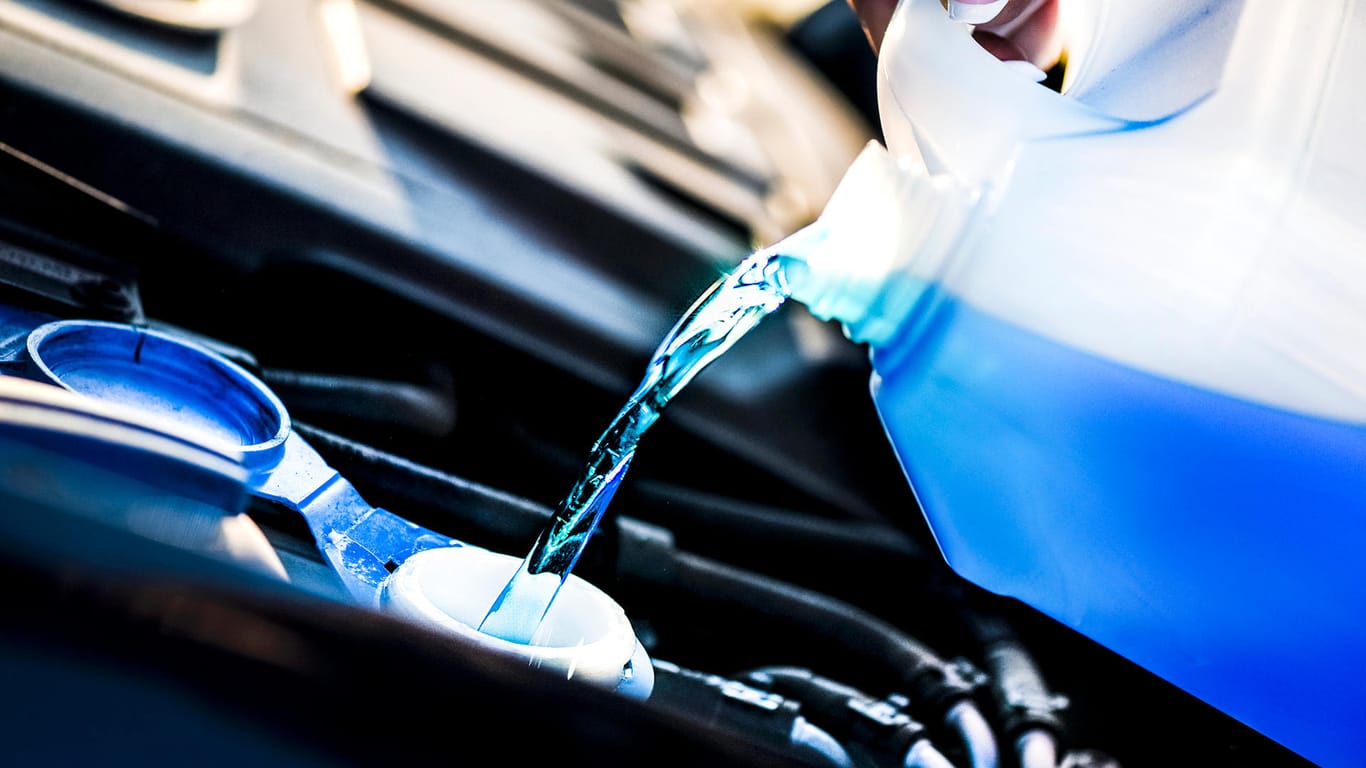Glycerin is a common ingredient in cosmetics and cleaning products. It is often used in industry as a lubricant and plasticizer. But the substance is also increasingly being used in food. What you should know about glycerin.
What is Glycerin?
Many cosmetic and cleaning products contain glycerin. It is an odorless, colorless, sweet-tasting sugar alcohol and is created, among other things, during the saponification of fats and oils to make soap. Glycerin is also known as glycerin or glycerol.

Most products contain glycerin from animal products. However, it can also come from plant sources, for example in the production of biodiesel. Coconut oil or palm oil can also be a vegetable source of glycerin. If the substance is obtained synthetically from petroleum, it is called high-purity glycerin. It is mainly used in the food and pharmaceutical industries.
In small amounts, glycerin is not harmful. However, if more than 50 milliliters of the liquid are consumed, it can cause headaches, kidney pain and intoxication. If applied undiluted to the skin, it can cause skin irritation and severe irritation.
Glycerin is available in pharmacies, among other places. The price per 100 milliliters is around 2.50 euros .
Glycerin in cosmetics

The cosmetic industry uses glycerin as an additive in creams and ointments because of its moisturizing properties. It is said to help against dry, cracked and itchy skin by penetrating the skin and also forming a slightly oily protective film on the surface. This prevents moisture from escaping the skin and helps it absorb more moisture. The skin appears smoother, healthier and remains elastic. Glycerin also has the same moisturizing properties when used on hair and is therefore a common ingredient in many shampoos and hair treatments.

But glycerin is not only intended to prevent skin and hair from drying out. It is also used as an additive in toothpastes, gels and creams as a humectant. This keeps them soft and usable.
However, many experts criticize the moisturizing properties of glycerin: it binds moisture and thereby dries out the skin in winter. Since there is not enough moisture in the air due to the dry heating air, glycerin removes it from the body or connective tissue. The upper layers of skin remain soft, while the lower layers of skin dry out and lose their elasticity, say critics.

Detecting too much glycerin in products
Glycerin is contained in almost all cosmetic products. It is only harmful if the proportion is higher than ten percent. Because only then does it dry out the skin. A value between three and five percent is ideal.
Many manufacturers do not note how high the proportion of each substance is in the product. However, if it is at the top of the list, the proportion is very high. The further down the ingredient is mentioned, the less of it it contains. This means: Glycerin should be listed as far back as possible in the list of ingredients. It is usually in third or fourth place. It is assumed that the proportion will then be around ten percent. If you want clarity, you should ask the manufacturer directly.
Glycerin in cleaning products

Glycerin has been used as a cleaning agent for several decades. The product is particularly known for pre-treating stubborn stains such as those caused by grass, coffee and tar.
A little glycerin in the cleaning water for the windows prevents the panes from tarnishing or icing over and dust or pollen from sticking to them. Rainwater also bounces off better after cleaning the windows with glycerin. You can also use it to clean and care for your tiles in the bathroom : After treatment, water stains no longer form on surfaces and limescale or dirt can no longer be deposited.
Glycerin in everyday life

Glycerin is also used in cars . Among other things, it is contained as a lubricant in the brake fluid and in the antifreeze for the windshield wiper system.
To ensure that rubber seals do not become porous but remain elastic and soft, you can rub them with glycerin. However, remember that the fabric is slightly oily and can build up on other items.
To prevent your glasses and mirrors from fogging up, you can rub with glycerin. Then polish everything with a leather rag. As with the window panes, this repels dirt and water better.
Household tricks with glycerin
There are several ways glycerin can make household chores easier:
- For example, add a few drops of glycerin to the water of cut flowers or your Christmas tree. This kills bacteria and prevents the plant’s pores from becoming clogged.
- You can use the softening properties of glycerin for more than just your skin and hair. Your wool sweaters or blankets will also become softer again by adding a few drops during the washing process.
- Another trick on how glycerin can make household chores a little easier is to rub it on the inside walls of the defrosted freezer. This is intended to slow down the freezing of the freezer compartment and make defrosting easier later.
Glycerin in foods
The food industry also uses glycerin as an ingredient. It is often listed in the list of ingredients under the name E422 and is also used to maintain moisture. It is particularly often used as an additive in meat products, chewing gum and dates. Some sweeteners also contain glycerin.
Glycerin in medicine
The pharmaceutical industry often uses glycerin in the form of suppositories for, among other things, constipation or hemorrhoids . It softens the stool and also stimulates bowel movement.Another dosage form is, for example, ear drops. They are prescribed, among other things, for itchy and painful irritations of the ear canal.

